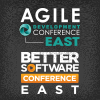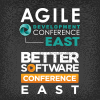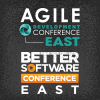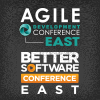 |
Scaling Git for the Enterprise
Slideshow
Due to its ease of use and distributed repository infrastructure, Git is quickly becoming the version control system of choice for many. Getting started takes only a few minutes, and available online tutorials explain Git basics and more advanced features including branching. As easy as...
|
Bob Aiello, CM Best Practices Consulting
|
 |
Transforming How We Deliver Value: Agility at Scale
Slideshow
Continuous delivery in software development allows us to deliver incrementally, get quick feedback, and react. A key enabler is the adoption of agile techniques and methods; key inhibitors in the enterprise are size, scale, and complexity. The Rational ALM organization is a typical...
|
Amy Silberbauer, IBM
|
 |
Agility at Scale: WebSphere’s Agile Transformation
Slideshow
In today's rapidly changing environment, organizations—both large and small—must quickly respond to shifting market requirements to remain competitive. To be successful, many are adopting agile development and continuous delivery methodologies to deliver software quickly, while keeping...
|
Susan Hanson, IBM Software Group
|
 |
The Agile PMO: Right Work, Right Time, Right People One of the core functions of a PMO is to help an organization standardize efficient processes to select and execute strategic projects. Unfortunately, many PMOs are finding themselves struggling to justify their own existence. In a recent survey, more than half of the respondents reported...
|
Heather Fleming, Gilt Groupe, and Justin Riservato, Gilt Groupe
|
 |
Techniques for Agile Performance Testing
Slideshow
The performance of your application affects your business more than you might think. Top engineering organizations think of performance as not just a nice-to-have feature but as a...
|
Jim Hirschauer, AppDynamics
|
 |
Keynote: Know the Way, Show the Way, Go the Way: Scaling Agile Development
Video
Tired of the claims that Scrum, XP, and kanban don’t scale beyond a few teams? Overwhelmed by management’s resistance to the organizational changes needed to really follow agile principles? Concerned with the lack of proven practices required to scale agile methods to the next level?
|
Dean Leffingwell, Leffingwell LLC
|
 |
Agile at Scale with Scrum: The Good, the Bad, and the Ugly
Slideshow
Come hear the story of how a business unit at one of the world's largest networking companies transitioned to Scrum in eighteen months. The good-more than forty teams in one part of the company moved quickly and are going gangbusters. The bad-an adjacent part failed in its transition. The ugly-if you're in a large company with globally distributed teams, it's not hard to torpedo Scrum adoption. Steve Spearman and Heather Gray describe Scrum adoption challenges for a multi-million line, monolithic system developed across multiple locations worldwide. They share the techniques and tools that helped them implement Scrum in just two project cycles and the reasons part of the company failed to make the leap.
|
Steven Spearman, AgileEvolution
|
 |
Scaling Agile at Dell: Real-life Problems - and Solutions
Slideshow
The transition from waterfall-based software development to an agile, iterative model carries with it well-known challenges and problems-entrenched cultures, skill gaps, and organizational change management. For a large, globally distributed software development organization, an entirely different set of practical challenges comes with scaling agile practices. Last year the Dell Enterprise Solutions Group applied agile practices to more than forty projects ranging from a collocated single team project to projects that consisted of fifteen Scrum teams located across the US and India. Geoff Meyer and Brian Plunkett explain how Dell mined these real-life projects for their empirical value and adapted their agile practices into a flexible planning model that addresses the project complexities of staffing, scale, interdependency, and waterfall intersection.
|
Geoffrey Meyer, Dell Inc. l Enterprise Product Group
|
 |
Disciplined Agile Delivery in IT: A Full Lifecycle Approach
Slideshow
The good news: Agile methods deliver superior results compared to traditional approaches. The bad news: For IT projects, mainstream agile methods-Scrum, Extreme Programming (XP), and Agile Modeling (AM)- provide only part of the overall solution. Agile IT projects require some time and effort for upfront planning at the start and activities for sophisticated deployment scenarios at the end. Additionally, most agile projects in large IT organizations cannot escape compliance with governance standards. Mark Lines describes and explores the realities of agile development in enterprise IT environments. Discover how IBM’s freely available Disciplined Agile Delivery (DAD) process framework combines common practices and strategies from mainstream agile methods to address the full delivery lifecycle-from project initiation to solution release into production.
|
Mark Lines, UPMentors
|
 |
Test Automation on Large Agile Projects: It's Not a Cakewalk Automating regression testing on large-scale agile projects with multiple independent Scrum teams is not a cake walk. Because there is no single "test team" that performs all the testing-each Scrum team develops and runs independent tests, gaps arise as different automation implementations spring up. One team adds a new function which breaks automated tests, setting back the progress of other teams. Scott Schnier reviews one organization's journey developing a "test community of practice" to coordinate test development and maintenance across Scrum teams. Scott shares the lessons they learned, particularly selecting tools compatible with other developer and tester needs. Learn how Scott extended the JUnit framework to support automated functional testing and how his teams keep the standard that a user story is not really done until all its tests are "green" in the continuous integration, regression test pipeline.
|
Scott Schnier, Agilex Technologies
|

